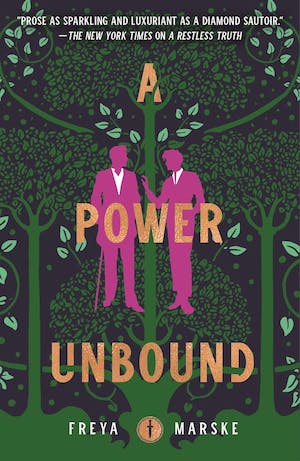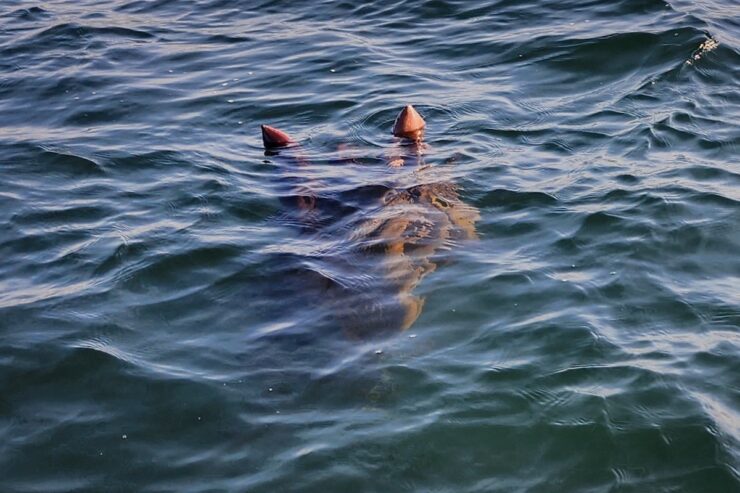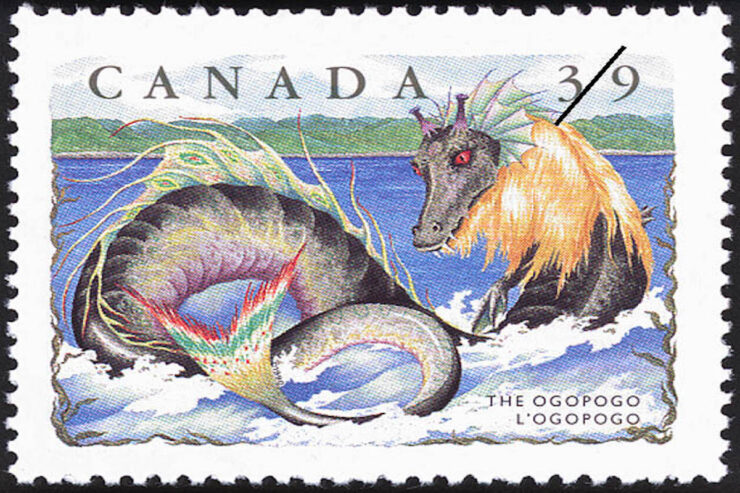In most respects In Deeper Waters is a standard YA fantasy-romance. It’s secondary world with minimal worldbuilding. Fairytale/fantasy kingdom, familiar family dynamics, equally familiar styles of names and places. There’s a mildly rebellious prince, a mysterious love interest, a solid dollop of politics and a suitably nasty villain or three.
What makes it relevant to my interests is that the love interest is a merman. Rather than the usual heterosexual pair, the lovers are both male. They appear, as the story unfolds, to be bisexual, but their main interest is in each other.
Like so many other mermaid stories, In Deeper Waters is a direct descendant of Hans Christian Andersen’s fairy tale. Lukens shifts the viewpoint to the prince and makes the mermaid a merman. She wipes out the undersea kingdom, as far as anyone in the novel can know, and leaves him all alone.
He lives in a sea cave, and has one human friend in the nearby town. It appears that he’s the last of his kind. All the rest were destroyed by a rogue mage.
The prince is a descendant of that mage. He’s also the last of his kind—the last to possess magic. Magic now is forbidden because of evil King Lon, and young Tal (or Taliesin) has been hidden in the family palace for years.
Now he’s about to turn sixteen, and his mother the Queen has released him in the care of his elder brother Garrett, to embark on a coming-of-age journey. Tal is a wretched sailor and a complete innocent in the ways of the world, but he’s learned to control his magic, mostly. He’s supposed to keep it a secret, at least until it’s politically expedient to reveal it, and he’s also supposed to learn what he can about the kingdom his family rules.
He’s not the heir; that’s his elder sister, who is about to marry a prince from a neighboring kingdom. He has one younger sister, and two older brothers, Garrett, who’s a sea captain and a military commander, and Kest, who’s a falcon shifter.
Shifters are the only kind of magical beings who are still allowed in this world. We’ll meet a cat shifter, too. They’re integral to some of the subplots, particularly the ones that involve pirates, wicked mercenaries, and sunken treasure.
Tal’s journey follows the classic format. Naïve young prince learns, with difficulty, how to master his magic. He meets members of the lower classes and learns what their lives are like, despite his brother’s attempts to turn his journey into a tavern crawl. And he falls in love with a mysterious and beautiful stranger who keeps appearing and then disappearing until his true nature and origins are revealed.
There’s more than one instance of capture and torture. The villains are villainous, and their motives are suitably dastardly. Tal has to figure out who the evil mastermind is, and there are multiple incidences of arranged marriages, not all of which end up actually happening.
The merman, whose name is Athlen, is able to walk on land; that is the form in which Tal meets him, and the one he wears for much of the first part of the book. It’s not a natural form; as in the fairy tale, he’s made a bargain with a Sea Witch. He can shift back and forth, unlike the original mermaid, and he seems not to suffer a great deal of pain in the short term, though after a few days away from the sea, he deteriorates rapidly.
In merman form he looks like Disney’s Ariel or Splash’s Madison. (And there’s yet another tribute to the most iconic image of the latter film, the merman in the bathtub, tail curling out over the end.) Beautiful red-and-gold tail with extra frills, scales up over his chest. He has gills, which are not that common in Little Mermaid varietals. The humanoid part of him is a gorgeous freckled blond with beautiful light brown eyes. Tal is quite taken with the eyes and the freckles.
Buy the Book


A Power Unbound
In addition to the apparent destruction of his entire species (but maybe not—they might have fled to other waters), Lukens gives the Sea Witch a backstory that binds her to Tal’s family. When evil King Lon essentially blew up the world, he drove a rival mage, a water witch, into the sea. There she’s been bound, but she still has magic, and she will wield it for a suitable compensation.
The bargain Athlen makes with her remains mysterious until quite late in the story, though readers familiar with the fairy tale will have an inkling. The price Athlen agreed on is not one he ever expected to pay. But of course, fairy tales and magical bargains being what they are, not only does he have to pay it, it’s much harder and more painful than he thought it could be. The consequence for not paying it will be familiar, too: it involves sea foam and dissolution.
This is a romance, which means Happy Ever After. That in turn means that Tal helps Athlen navigate the shoals of the bargain, renegotiate with the Sea Witch, and resolve the various subplots in ways that give the good guys the requisite happy endings. The outcome is quite satisfying; it’s a hard road to get there, but it all comes out right in the end.
What makes this particularly poignant is that Andersen’s fairy tale was written upon the engagement of one of his male friends to a woman. Andersen’s era was notably hostile to non-heterosexuals. He could never express his love openly; like the mermaid, he could only yearn for what was forbidden. The best he could do was pretend to be what he was not, and that pretense was pain.
If Andersen could have known of Lukens’ queer romance, I think he would have thought he’d found paradise. His mermaid could only find it through three hundred years of good works in the form of an air spirit, and she could never know physical love. Our world arrived at that point in half the time—physically as well as spiritually. Andersen might have had his love after all, and marriage, too. It’s a great tragedy of his age, that he couldn’t have either.
Judith Tarr is a lifelong horse person. She supports her habit by writing works of fantasy and science fiction as well as historical novels, many of which have been published as ebooks. She’s written a primer for writers who want to write about horses: Writing Horses: The Fine Art of Getting It Right. She lives near Tucson, Arizona with a herd of Lipizzans, a clowder of cats, and a blue-eyed dog.














